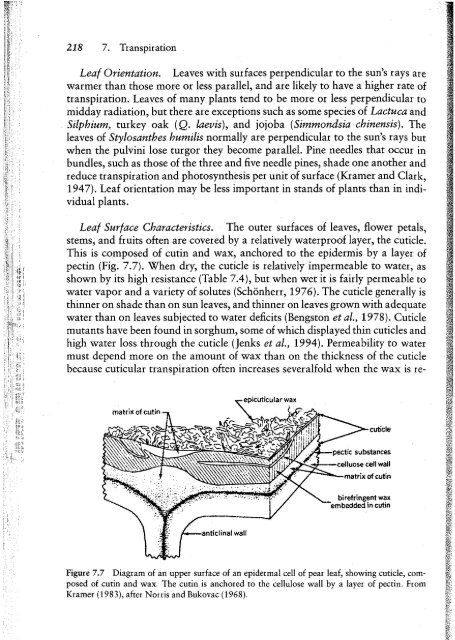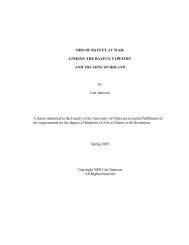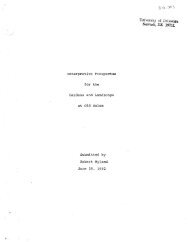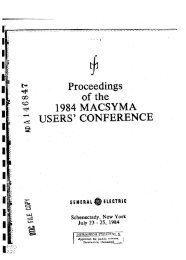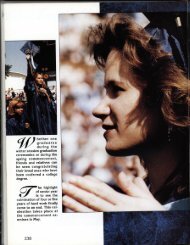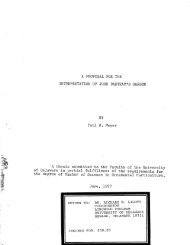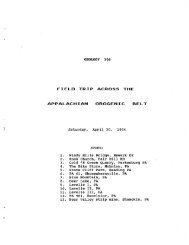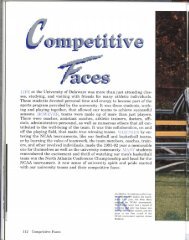Transpiration and the Ascent
Transpiration and the Ascent
Transpiration and the Ascent
Create successful ePaper yourself
Turn your PDF publications into a flip-book with our unique Google optimized e-Paper software.
218 7. <strong>Transpiration</strong><br />
Leal Orientation. Leaves with surfaces perpendicular to <strong>the</strong> sun's rays are<br />
warmer than those more Or less parallel, <strong>and</strong> are likely to have a higher rate of<br />
transpiration. Leaves of many plants tend to be more or less perpendicular to<br />
midday radiation, but <strong>the</strong>re are exceptions such as some species of Lactuca <strong>and</strong><br />
Silphium, turkey oak (Q. laevis), <strong>and</strong> jojoba (Simmondsia chinensis). The<br />
leaves of Stylosan<strong>the</strong>s humilis normally are perpendicular to <strong>the</strong> sun's rays but<br />
when <strong>the</strong> pulvini lose turgor <strong>the</strong>y become parallel. Pine needles that OCCurin<br />
bundles, such as those of <strong>the</strong> three <strong>and</strong> five needle pines, shade one ano<strong>the</strong>r <strong>and</strong><br />
reduce transpiration <strong>and</strong> photosyn<strong>the</strong>sis per unit of surface (Kramer <strong>and</strong> Clark,<br />
1947). Leaf orientation may be less important in st<strong>and</strong>s of plants than in individual<br />
plants.<br />
Leaf Surface Characteristics. The outer surfaces of leaves, flower petals,<br />
stems, <strong>and</strong> fruits often are covered by a relatively waterproof layer, <strong>the</strong> cuticle.<br />
This is composed of cutin <strong>and</strong> wax, anchored to <strong>the</strong> epidermis by a layer of<br />
pectin (Fig. 7.7). When dry, <strong>the</strong> cuticle is relatively impermeable to water, as<br />
shown by its high resistance (Table 7.4), but when wet it is fairly permeable to<br />
water vapor <strong>and</strong> a variety of solutes (Sch6nherr, 1976). The cuticle generally is<br />
thinner on shade than on sun leaves, <strong>and</strong> thinner on leaves grown with adequate<br />
water than on leaves subjected to water deficits (Bengston et at., 1978). Cuticle<br />
mutants have been found in sorghum, some of which displayed thin cuticles <strong>and</strong><br />
high water loss through <strong>the</strong> cuticle (Jenks et at., 1994). Permeability to water<br />
must depend more on <strong>the</strong> amount of wax than on <strong>the</strong> thickness of <strong>the</strong> cuticle<br />
because cuticular transpiration often increases severalfold when <strong>the</strong> wax is re-<br />
cuticle<br />
birefringent wax<br />
-embedded in cutin<br />
Figure 7.7 Diagram of an upper surface of an epidermal cell of pear leaf, showing cuticle, composed<br />
of cutin <strong>and</strong> wax" The cutin is anchored to <strong>the</strong> cellulose wall by a layer of pectin" From<br />
Kramer (1983), after Norris <strong>and</strong> Bukovac (1968),


